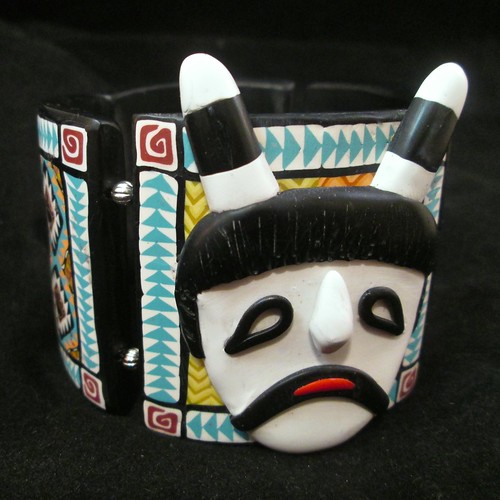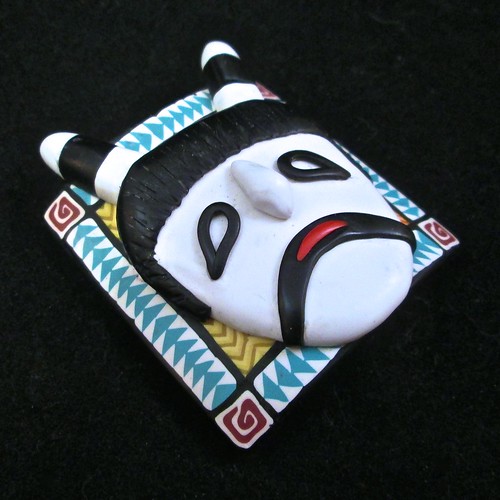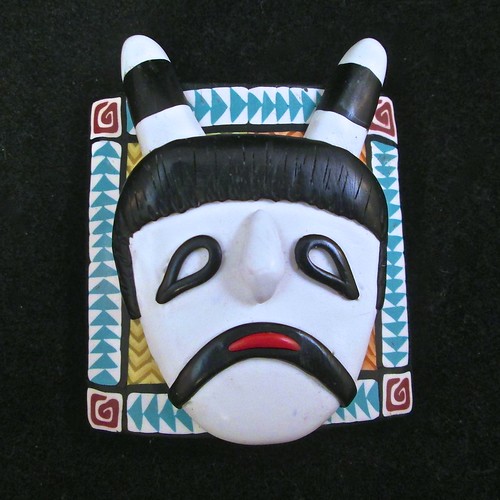 Clown Kachinas are also known by the names Koshari, Koyala, Hano, or Tewa. They entertain during Kachina ceremonies by humorously exaggerating improper behavior to remind people of acceptable standards. They are loud, boisterous, play tricks, mimic spectators and act out absurd pantomines. They are shown with watermelons as symbols of gluttony and are often drummers for dances. It is the job of the Owl Kachina and different warrior Kachinas to keep these mischievous characters in check.
Clown Kachinas are also known by the names Koshari, Koyala, Hano, or Tewa. They entertain during Kachina ceremonies by humorously exaggerating improper behavior to remind people of acceptable standards. They are loud, boisterous, play tricks, mimic spectators and act out absurd pantomines. They are shown with watermelons as symbols of gluttony and are often drummers for dances. It is the job of the Owl Kachina and different warrior Kachinas to keep these mischievous characters in check.In making masks on tiles that represent painted faces rather that actual masks, I had to figure out some design elements to make it work. All these little masks are trial versions while I work out design elements that need refining or replacing, but I think I like the way this guy laid out and the feel of the face on the millefiori background. I want the main focus of all these kachinas to be based on cane work, but this face is more suited to sculpture than caned elements, so I started with a tile background with various canes - the yellow and orange zigzag canes from my Sunface Kachina and the arrow and swirl border from my Southwestern Bear Claw Tiles. While my background tile was baking, I created a raised face that i covered in white clay. All the facial details and the "horns" were added to finish the face, which was then attached to the already baked and sanded background tile with the help of some Kato Poly Paste. A second baking and a thorough sanding and buffing resulted in the cute little guy shown below!

| 
|
 | |

I haven't had a chance to visit recently, but WOW have you been busy creating, Deb! These Kachina figures are quite intriguing. I wish this clown figure could be enlisted to "... remind people of acceptable standards..." in our modern society. They would have their work cut out for them. I think one aspect of aboriginal societies that worked well was how they dealt with those who strayed, by gently guiding and taking responsibility for those who left the path, rather than pushing them away and relying on Big Brother. Just one gal's opinion :)
ReplyDeleteThank you, Monique! =) I've been trying to push my creativity up a notch and these Kachinas have been on my mind for a few years now. I like what they represent. I have to agree with you - it would be nice to see people guided back. Too many think if they can get away with it, it makes it right now. I think our moral compass is in serious need of healing. =) Thanks for visiting and commenting!
Delete